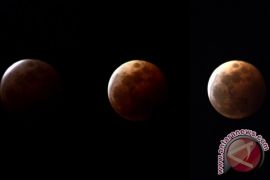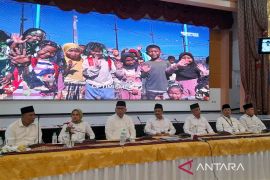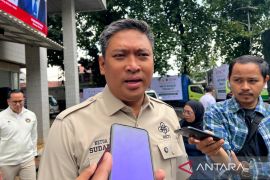A total solar eclipse occurs when the Sun is completely covered by the Moon that passes between the Earth and Sun at a point in its elliptical orbit when it is relatively close to the Earth, according to information on http://moonblink.info.
The moon casts a shadow when it passes between the Earth and Sun. The umbral part of the shadow (the umbra) is an area where the Sun is totally obscured by the Moon. During a total eclipse, the Moon is very close to the Earth, thus part of the umbra falls upon the Earth.
In technical terms, its magnitude is greater than or equal to 1.000. People in those parts of the Earth, within the umbra, are able to witness the Suns face completely hidden by the Moon, resulting in a total eclipse of the Sun, according to information on the moonblink website.
This rare and spectacular event will be visible from a path of totality up to 155 kilometers (km), or 96.3 miles wide, creating a dramatic spectacle for millions of people present on the path of totality in Indonesia, who will see the sun totally eclipsed for as much as three minutes.
According to the Indonesian Institute of Aeronautics and Space (LAPAN), the total solar eclipse will be best visible in 10 provinces: Palembang in South Sumatra; Bangka Belitung; Sampit and Palangkaraya in Central Kalimantan; Balikpapan in East Kalimantan; Palu, Poso, and Luwuk in Central Sulawesi; Ternate and Halmahera in North Maluku; West Sulawesi; Bengkulu; Jambi; and West Kalimantan.
The total solar eclipse is expected to occur on March 9, 2016, at 6:20 a.m., Western Indonesian Standard Time (WIB), 7:25 a.m. Central Indonesian Standard Time (WITA), and 8:36 a.m. Eastern Indonesian Standard Time (WIT).
According to LAPAN, the total solar eclipse will be visible for about 1.5 to three minutes.
The Indonesian government, however, will organize the peak event of the total solar eclipse tours in Bangka Belitung Province, Sumatra Island, on March 9 next year, according to an official of the Coordinating Ministry for Maritime Affairs.
"In the first coordination meeting held in July 2015, it was decided that the peak event will be held in Belitung, but other regions, where solar eclipse would also be visible, will also organize activities," Safri Burhanuddin, deputy in charge of human resources, science, technology, and maritime culture of the coordinating ministry, stated in a coordination meeting on the solar eclipse tours held in Jakarta on Jan. 19, 2016.
Bangka Belitung has been chosen to host the peak event since the area to experience the eclipse is about 150 km, as most of the Belitung waters will lie in the path of the eclipse, and it will be visible there for some two minutes.
Safri expressed hope that several tourists from neighboring countries will visit Bangka Belitung by yacht to witness this rare natural phenomenon.
However, several scientists are preferring to observe the eclipse in eastern Indonesia as it will last for a longer time period in the region.
Safri Burhanuddin, deputy of the Coordinating Minister for Maritime Affairs, noted that solar eclipse tours have been promoted since the past two years.
Various activities will be organized in regions where this years total solar eclipse will be visible, apart from the peak events in Bangka Belitung.
"In fact, there is a plan that President Joko Widodo will chair a cabinet meeting aboard a ship. We will certainly invite students and scientists to watch the eclipse. The Tourism Ministry will coordinate a yacht rally from Singapore and Malaysia to go to Belitung," he revealed.
The Indonesian Tourism Ministry has organized promotional activities to market the total solar eclipse tours.
"We have discussed in the meeting just now our plan to continue supporting the promotion until the total solar eclipse event," the ministrys expert staff in charge of multicultural affairs, Hari Untoro Drajat, stated.
The ministry has made preparations for conducting promotional activities to market tours during solar eclipse with the assistance of the Coordinating Minister for Maritime Affairs office and the Majapahit Lover Foundation.
"We can say that 89 percent of the preparations have been made to conduct promotion until the date of the event," he affirmed.
The ministry has invited foreign tourists, researchers, and community groups to witness the rare natural phenomenon that occurs only once every 350 years.
The two major themes promoted as part of the solar eclipse tours are "Wonderful Indonesia" and a maritime mission, he remarked.
The tourism office of Bangka Belitung Islands Province hopes to lure at least six thousand tourists during the eclipse.
"Currently, some 80 percent of hotel rooms on Belitung Island have been reserved by tourists keen to see the total solar eclipse," he noted.
On Bangka Island, some 60 to 70 percent of the hotel rooms have been booked by domestic and foreign tourists.
The solar eclipse will offer the necessary momentum for Bangka Belitung to promote its tourist attractions such as beautiful beaches, unique culture and arts, traditional music and dances, as well as the local culinary arts, he remarked.
Numerous tourists from the United States, Japan, China, Canada, and France have booked air tickets to visit the province to witness the eclipse, he added.
"We are preparing the monitoring site along Terentang Beach where the eclipse is expected to be clearly visible," he stated.
The Bangka Belitung tourism office also plans to provide 5.5 thousand special eyeglasses to tourists to watch the total solar eclipse.
Unlike a lunar eclipse, which is perfectly safe to watch with the naked eye, a solar eclipse is potentially dangerous, as viewing a solar eclipse involves looking at the Sun, which can damage eyesight.
Even when 99 percent of the Suns surface is obscured during the partial phases of a total eclipse, or in an annular eclipse, the remaining sliver of the Sun is intensely bright and is just as intense as at any other time and cannot be viewed safely without proper eye protection, according to moonblink.info.
Failure to use appropriate filtration may result in permanent eye damage or blindness. Viewing the Sun indirectly, by projecting its image onto a screen, is a safe way to enjoy any solar eclipse.
In spite of these precautions, the total phase of a solar eclipse --- when the Sun is completely covered by the Moon --- can and should be viewed without any filters. The naked eye view of totality is safe and is the most awe-inspiring astronomical phenomenon one is likely to see.
But, one should look away and put eclipse glasses back on as soon as the Sun returns, according to moonblink.
(*)
(T.F001/A/KR-BSR/A014) 20-01-2016 15:42:16
Reporter: Fardah
Editor: Fardah Assegaf
Copyright © ANTARA 2016











